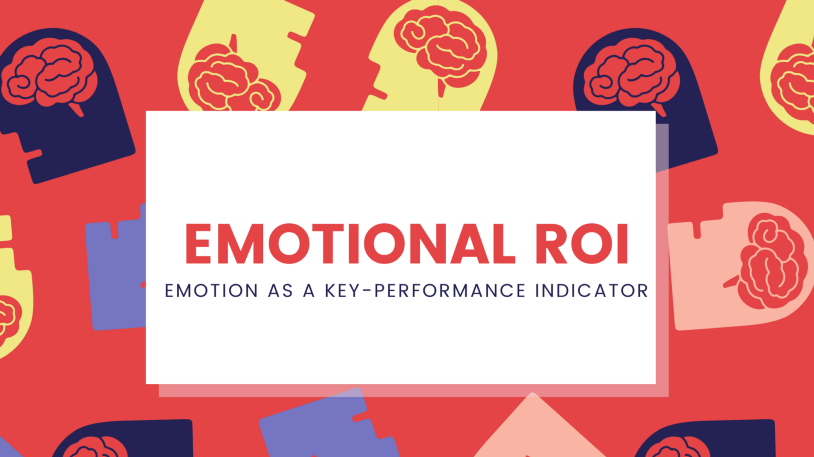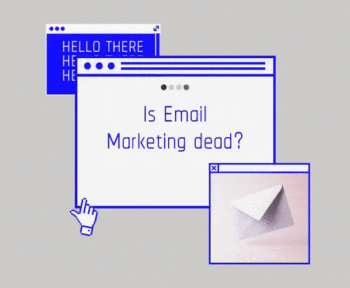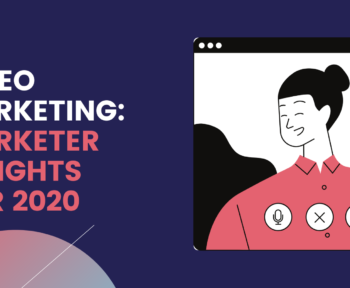
Como (e porquê) combinar ROI e ROI Emocional significa mais sucesso a nível de vendas.
Retorno de Investimento (ROI): um termo que todos os marketers conhecem de trás para a frente. Este indicador essencial é uma métrica-chave quando o objetivo é medir a performance. É baseado em números, lógica e racionalidade. Mas e o ROI Emocional? Atualmente, é claro que os consumidores e os processos de compra são feitos de muito mais elementos do que somente indicadores lógicos — as emoções são uma dimensão importante neste âmbito.
O que é o ROI Emocional?
Pense na sua audiência. Não como números, mas como indivíduos, como humanos que privilegiam, frequentemente, as emoções acima da racionalidade quando tomam uma decisão de compra. A acompanhar o risco financeiro, há um risco emocional — e é aqui que o ROI Emocional ganha importância. Oferecer ROI Emocional significa que é possível prometer, ao consumidor, que os benefícios emocionais provenientes da compra serão mais substanciais do que algum tipo de risco emocional que possa ser considerado no momento de compra.

O ROI Emocional está intimamente relacionado com o Marketing emocional, uma vez que, muitas vezes, o primeiro utiliza ferramentas do segundo para provocar uma resposta emocional no consumidor. Para conseguir fazer isto, é necessário criar uma ligação com a audiência, explorar as suas emoções e estar preparado para adicionar um fator emocional aos esforços de marketing e vendas.
Esta abordagem ditará a forma como o produto pode ser diferenciado da concorrência. Num mercado repleto de boas opções, mensagens e oportunidades comerciais, o factor-chave capaz de fazer a diferença na escolha de um produto é a emoção.
So, if this is such a strong performance indicator, why aren’t we measuring it as frequently as ROI?
Emotion as a Key Performance Indicator
Most of the marketers know cash flow measurement, revenue measurement, but what about emotional measurement?
“What’s interesting is that when most of us try to explain a logical, rational ROI to the customer, it is often at the bottom of their list of their real reasons to buy” — Garin Hess
Measuring the emotional state of a consumer gives you access to a deeper understanding of your audience and its state of mind. And since emotions drive people, it´s essential to know how and what they’re feeling — both towards your product and to what’s happening on the world around them (social and political contexts, seasonal elements, trends, they all have a direct effect on emotions).

Emotional ROI is so important than a MaritzCX study revealed that 80% of the companies who proactively gather, analyze, manage, and use insights into customers’ feelings have better financial performance, year-over-year.
But how do you measure emotions? Emotioent (now Imotions) a start-up bought by Apple in 2016, actually defined KPIs for emotions:
- Attention — Is your advertising or product getting noticed?
- Engagement — Are people responding emotionally?
- Sentiment — Are they showing positive, negative, or no emotion?
Every emotion has different leverage on the audience with studies showing, for example, that happiness makes us share things, increasing brand awareness. So when it comes to engagement and sentiment, your assessment of emotional ROI should focus on what emotions people experience when relating to your product or content. Attention is also a tricky KPI since we’re living in the age of the goldfish attention span. This means you’ve only got eight seconds to make a connection and draw attention. How? Tap into your customer subconscious. How? Again, emotions.
“Reactions can be predicted; the final buying decision is made by our subconscious part. Learn how to maneuver it, and you will control your audience. Gut level decisions will always win over information and rationality! — Grecia Iuculano, Digital Marketer
Leaving emotions out of your key-performance indicators pool is sacrificing a huge part of your customer. By doing this you will be actively choosing to not fully understand your audience to all its extent.
What’s at risk? Your customers’ feelings.
A prospect can consider the business’ financials if you make a compelling financial case, but they’ll also have to believe that the emotional ROI they’ll get from it personally is in their favor.
So how can digital marketers start to integrate an emotional marketing framework into their planning process?
Using Emotions to Bring out a Consumer’s Response
According to a study by Harvard Business Review, emotionally connected customers are more than twice as valuable as highly satisfied customers. But how do you emotionally connect with them? Data shows you can do this by connecting to customers at an emotional level, “tapping into their fundamental motivations and fulfilling their deep, often unspoken emotional needs”.
“By setting emotional connection as the overarching goal, the “true north” of the customer experience, companies can point their investments in the right direction, execute more effectively, and reap significant financial rewards”. — Harvard Business Review
In his book “Selling Is Hard. Buying Is Harder: How Buyer Enablement Drives Digital Sales and Shortens the Sales Cycle”, Garin Hess states that every touchpoint needs to reinforce a buyer’s belief that the emotional ROI will be worth it. This author uses the “five P’s” to highlight what buyers emotionally want: profit, prestige, pleasure, preservation, and pain relief.
The best way to answer these emotional needs is to tap into the power of emotional marketing. Your ultimate goal is to create a sense of connection and belonging with your audience by understanding it.
Emotional ROI During COVID
Experts say Emotional ROI should be a key performance indicator during COVID. Tony Verre of The Integer Group and other marketers are tackling the challenges of the pandemic by enabling more sensitive messaging and focusing on generating an emotional return of investment.
Video Source: Search Engine Land
Marketing professionals seem to be accomplishing that by trying to achieve a balance between promoting the company and not coming off as opportunistic as well as communicating in more aware ways and prioritizing marketing momentum — instead of going dark.
When it comes to brands and companies, it’s a time to create deeper relationships with customers, fans and communities, based on emotion, truth, and the powerful feeling of “we’re in this together”. Adding positivity and a never-give-up attitude to our Marketing strategies is our top priority nowadays.
Many examples prove emotional marketing drives real ROI and that we’re at a point where “share of emotion” should now complement “share of voice” metrics. Emotional ROI blended with actual ROI means more sales success.
In the end, buying — both for consumers and in B2B situations — is always an emotional decision.


